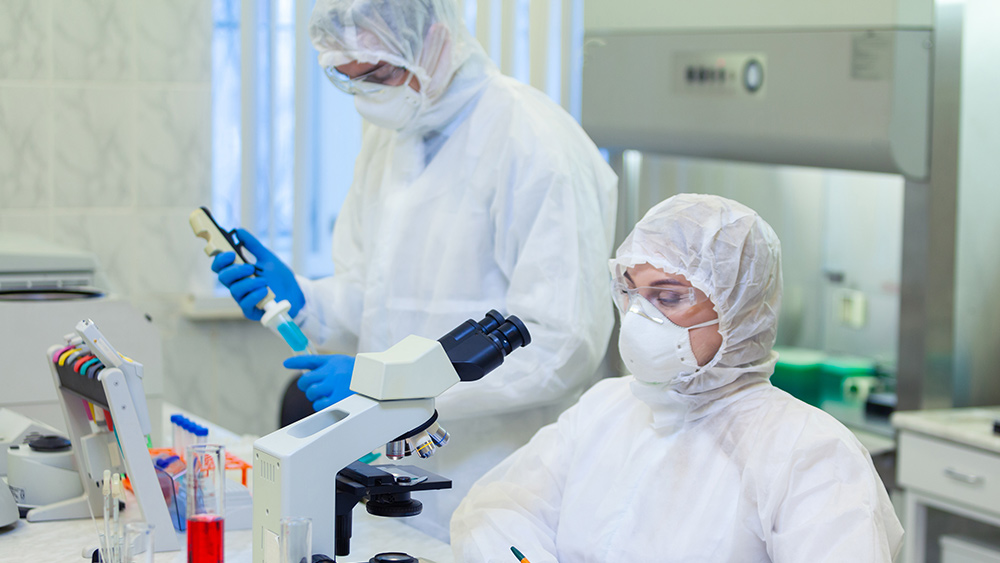Chinese tech giant launches DRIVERLESS taxis in Beijing
05/05/2021 / By Virgilio Marin

Chinese tech giant Baidu rolled out a fleet of driverless taxis in Beijing on Sunday, May 2, becoming the first firm to commercialize autonomous driving in China.
Unlike previous demonstrations, there is no human driver behind the wheel as the autonomous cars, called Apollo Go Robotaxis, ferry passengers in Shougang Park in west Beijing. Instead, a safety engineer sits in the front passenger seat and a remote operator is on hand in case of an emergency.
The taxis are currently available to commuters aged 18 to 60, with each ride to one of eight pre-programmed destinations costing $4.60.
To hail an Apollo Go taxi, passengers have to make a request on the Apollo Go app. Once the request is processed, the taxi will announce its arrival with a honk. Passengers are then required to scan a QR code and verify their health information before entering the car to confirm their identity and prevent the spread of disease. The taxi will only start the trip after its artificial intelligence (AI) detects that the doors are shut and seatbelts are fastened.
Ten Apollo Go taxis are currently operating in a 1.2-square mile area in Shougang Park, which will be hosting the 2022 Beijing Winter Olympics. Baidu, which is the Chinese equivalent of Google, expects that its robot taxis will be used to transport athletes and staff to and from Olympic venues.
Yunpeng Wang, Baidu’s general manager for autonomous-driving technology, forecasts that other first-tier Chinese cities and international locales will eventually adopt the Apollo Go taxi to provide more convenient and eco-friendly transit options.
“The commercialization of autonomous driving can alleviate congestion effectively and help to reach the peak carbon dioxide emissions and achieve carbon neutrality in China,” Wang explained. (Related: Why ending combustion engines would unleash a global environmental and humanitarian catastrophe linked to rare earth elements.)
A rider who works in the AI industry praised the taxi for providing a smooth riding experience. “There is a strong sense of technology, because nobody is in the driver’s seat,” Kelly Wang told Associated Press. “I would recommend people experience this.”
But others have no confidence in the technology since driving behavior is very complex.
“We’ve all had experiences such as other cars jumping the queue or making a sudden lane change,” Amy Li, a visitor to last Sunday’s launch, told Associated Press. “People have emotions while robots don’t, at least at present. [Therefore] autonomous vehicles may not be able to deal with such changes.”
But Wang insists that Baidu conducted driverless tests in many cities before the rollout, with tests starting in Beijing neighborhoods last October. The firm claims that the trials clocked more than six million miles of road testing in total.
The dangers of autonomous vehicles
Driverless cars have been involved in multiple road accidents, with one car crash resulting in a pedestrian’s death. In 2018, tech firm Uber’s autonomous vehicle ran over a woman in Arizona, killing her.
The car carried a human safety driver but was operating independently when it rammed into 49-year-old Elaine Herzberg, who was walking with her bicycle in the middle of a clear, balmy night. According to police officers, the vehicle was moving at 40 miles per hour and did not appear to slow down before the impact. (Related: TESLA TERMINATOR: Tesla car autopilot veers off highway, crashes into road signs as driver locked out of all controls.)
On top of safety issues, critics were also concerned that autonomous vehicles would worsen traffic jam. In 2018, researchers gave participants in the San Francisco Bay area a free chauffeur-driven vehicle for a week to mimic the way car owners would use self-driving cars. They found that this arrangement increased the participants’ total vehicle-miles traveled and number of trips, particularly in the evening. In addition, a substantial portion of the trips were made on a “zero-occupancy” basis, meaning there was no rider in the car.
Mustapha Harb, a researcher at the University of California, Berkeley and the study’s lead author, explained that owning an autonomous vehicle might encourage people to take the car for trips that they did not bother driving to before. At the same time, this could also lead to the rise of the so-called “ghost trips,” he said.
“A bike or walking trip to the store to pick up a chocolate bar will not be as attractive as the convenient option of sending an empty car to do the pickup,” he told GreenTechMedia.
Learn more about the disadvantages of using autonomous vehicles by reading articles at RoboCars.news.
Sources include:
Tagged Under: AI, artificial intelligence, autonomous vehicles, Baidu, Beijing, car crash, cars, China, dangerous tech, driverless cars, driverless taxis, future cars, future science, future tech, glitch, road accidents, robocars, robot taxis, robotics, robots, self-driving cars, technology, traffic jam, transportation
RECENT NEWS & ARTICLES
COPYRIGHT © 2020 CommunistChina.News
All content posted on this site is protected under Free Speech. CommunistChina.News is not responsible for content written by contributing authors. The information on this site is provided for educational and entertainment purposes only. It is not intended as a substitute for professional advice of any kind. CommunistChina.News assumes no responsibility for the use or misuse of this material. All trademarks, registered trademarks and service marks mentioned on this site are the property of their respective owners.




















